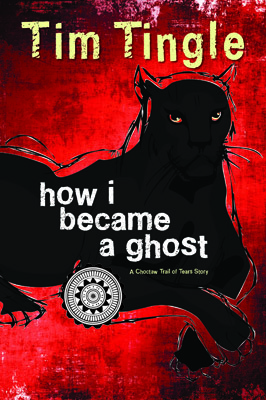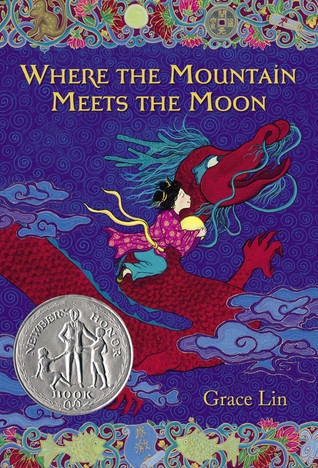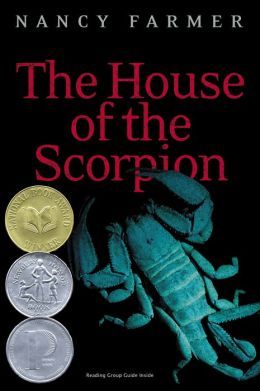A Tuesday Ten: Diverse Stories
Posted by Stephanie Whelan
Just found out YA and children’s author Walter Dean Myers has passed away. The world of literature has lost a great man, and a great voice who gave African American kids stories about kids like themselves. He gaves us urban landscapes and real life stories that caught the imaginations and hearts of so many readers. And he’s been continuing the demand for more diversity in fiction: just this past March the New York Times posted an essay from the author titled “Where are the People of Color in Children’s Books? ” I decided for this ten to look at speculative fiction with diverse characters.
1.

Justice and Her Brothers by Virginia Hamilton (Point Signature, c1978)
In science fiction, we see so few books featuring black protagonists. We see even less in children’s science fiction. In a genre where the adults and young adults have Octavia Butler, Nalo Hopkinson, Walter Mosley, Samuel R. Delaney, and Nnedi Okorafor, to name a few, the younger audiences have a dearth of writers and stories. Virginia Hamilton is honestly the one of the only African-American authors I’ve come across who writes science fiction for children. She was one of our most distinguished and impressive authors for children as well–and it’s a tragedy that so much of her work has gone into obscurity. In her lifetime, this author received every major award in her field across the globe. Look for more about her on her website . The book above is the first book in the Justice Cycle; this is the story of four young people with extrasensory powers, who first have to come to grips with their gifts, then their relationship with one another, and finally help to save the world. We need more science fiction–and we need more science fiction that represents more than just the white world. Science fiction tells us stories about our possible future, and all of us need to have those stories to tell and guide us to what the future might be.
2.

Ambassador by William Alexander (Margaret K. McElderry, Expected Publication, September 2014)
Now, I’ve done a Tuesday Ten list featuring African American speculative fiction characters. Sitting in my drafts is one I’ve been attempting to create for Hispanic/Latino Characters. To date I’ve failed to find even half a list’s worth of books to populate it. I’ve been becoming aware that there is a world of science fiction writers and stories that rarely ever make it into the Western publishing markets. I don’t know enough to know if there are children’s writers in the mix, but I hope so. Folks, William Alexander’s book above isn’t out until September, and its’ still the only example of children’s SF featuring a Hispanic-American character I know of. Gabe Fuentes has just been selected to be the new ambassador of Earth to the intergalactic community. It’s a tall order considering that he also has to deal a steady stream of assassination attempts and with the more mundane crisis of his family being torn apart because his parents have been living undocumented in the U.S. The book itself ends rather in the middle of the story–so I hope the author has the sequel coming. But we need to see more than one book out there . . .
3.

How I Became a Ghost by Tim Tingle (Roadrunner Press, 2013)
Native American stories are not entirely rare–but such stories within the Speculative Fiction genre can be. And I think it is exceedingly rare to have such a story told by an author of the Native American peoples he’s writing about. Tim Tingle is a member of the Choctaw Nation of Oklahoma. He is a storyteller of renown and a folklorist who has presented stories in many settings and for large audiences. In more recent years, he’s become an author. While he’s published books of short stories with supernatural elements, I believe this is his first novel for young readers. Tingle gives us a historical fantasy tale where Isaac, a Choctaw boy who dies upon the Trail of Tears and becomes a ghost. As a ghost, he narrates this tale and tries to help his people along their journey. It’s the first in a trilogy and an unusual look at this historical event.
4.


Daja’s Book by Tamora Pierce (Scholastic, c1998) and Coldfire by Tamora Pierce (Scholastic, c2002)
So I’ve posted two covers here. Both are from the same Circle of Magic series, each from a quartet of books where each book is focused on a different character of the group. Daja is featured on the cover here of both of her books, and she’s not only one of my favorite heroines, but these are some of my favorite covers when talking person of color on the cover. They’re gorgeous, to my mind. Daja is one of the Trader folk in this fantasy universe. She loses her parents when their boat sinks and winds up being taken in by a mage who spots potential in her for an unusual kind of magic. Daja’s magic is working with metal and fire–she can do amazing things with it and very quickly proves herself a force to be reckoned with. But she’s also still a girl, hurt over her people’s rejecting her as cursed. Daja is a vivid character who decides in the end to be herself, and expects to be accepted for it. Tamora Pierce has written many characters of color into her works and landscapes, providing one of the footholds in children’s fantasy for such things. There are others, mind you, but I Daja remains among my favorites.
5.

The Tiger’s Apprentice by Laurence Yep (HarperCollins, c2003)
When it comes to Chinese-American stories, author Laurence Yep is one of the anchors in children’s fiction. He’s provided young audiences with historical fiction, folklore and fantasy from the Asian part of the world. While there aren’t a lot of books featuring Asians and Asian-Americans in fantasy, there are some writers out there up to the challenge of producing them. I can’t necessarily say the same for science fiction, though I hope with the adult science fiction doors being opened in China, we might see more children’s literature in the genre as well. This is the first book of the Tiger’s Apprentice Trilogy featuring a Chinese-American protagonist. Tom Lee discovers he’s the latest in a long line of magical guardians, and now must learn how to use his talents with the help of Mr. Hu, a talking tiger.
6.

Where the Mountain Meets the Moon by Grace Lin (Little, Brown Books for Young Readers, 2009)
This Newbery Honor from 2010 is my second offering for Chinese fantasy stories. Grace Lin has made quite a name for herself in the last decade, both in fiction and picture books. But it is her Chinese fantasy novels that have particularly garnered my interest. Grace Lin weaves Chinese folklore through her own creations, creating a rich tapestry of story that has echoes in ancient tales, but is a thoroughly new creation. This story features Minli a girl whose head is full of stories and whose heart yearns for magic . . . and the quest she goes on with an assorted cast of characters. While there are plenty of stories that pull in Greek mythology and European fairy tales, stories that capture Chinese mythology are still rather rare.
7.

The House of the Scorpion by Nancy Farmer (Atheneum, c2002)
This dystopian novel was a Newbery Honor for 2003, Won the National Book Award for Young People’s Literature (2002) and a number of other awards, honors and nominations. It takes place in Mexico, in a future where Matteo Alacran is a clone, created from harvested DNA that was grown inside a cow. He’s the clone of El Patron, the ruler of the country called Opium. Matteo’s relationship with El Patron is complicated–especially since he’s much the same person, but can a clone considered property and bred to increase another’s lifespan ever have an identity of their own? It’s interesting that I haven’t connected Nancy Farmer more often with books about persons of color. Farmer is actually one of those rare authors who has explored not just Mexican culture and characters, but African ones. She should be a pretty good example of how even authors who are not of a particular background can write stories about characters who are of other races and cultures. The House of the Scorpion now has a sequel; Lord of Opium (2013) Though this book falls firmly into the young adult category.
8.

Handbook for Dragonslayers by Merrie Haskell (HarperCollins, 2013)
A different sort of diversity here–one that I need to do more looking about on. People with disabilities. Tilda in our story suffers from a clubfoot and regular pain in her feet. The story doesn’t try to magically take this away or ignore it, but makes it part of our main character and part of her adventure. Tilda may be an unconventional princess, and she may have a disability, but she is still a great protagonist. I’m not sure there’s all that many characters with disabilities in speculative fiction–particularly for kids. I have to do some hunting through titles to see, but it’s not common. I feel mention of this form of diversity belongs on my list.
9.

The Eye, the Ear and The Arm by Nancy Farmer (Puffin, c1994)
Yep, Nancy Farmer winds up twice on this list. This time for her 1995 Newbery Honor. Science fictional Africa is the setting, the year is 2194. General Matsika’s children have snuck out of their house . . . and vanished. Africa’s most unusual detectives: The Eye, The Ear, and the Arm are called in to find the children and get them safely home. Again, I don’t think Nancy Farmer gets quite as much credit as she should these days–there’s few individuals writing diverse speculative fiction and almost no one writing diverse science fiction for kids. Yet she’s got two Newbery Honors that say it can be done, done well and win awards. But one author can’t be the only voice out there–let’s see some more diverse futures!
10.

The Dragon Takes a Wife by Walter Dean Myers, illustrated by Fiona French (Scholastic, c1972)
To close this list I’m adding in a picture book story by none other than Walter Dean Myers himself. This goes in the category of “who knew?” for me. I was skimming through his works online (what a legacy he leaves us!) and happened upon this. It’s told in fairy tale fashion, though I haven’t read it myself. A dragon named Harry wants to win a wife, but he figures the way to do that is to fight a knight in shining armor–and he always loses badly. He asks the fairy, Mable Mae Jones to help. The fairy gives Harry some spells, but nothing seems to help until finally Mable uses a spell on herself and turns herself into a dragon. I’ll have to see if I can secure a copy to read. I think it’s always a bit amazing when you start looking over the work of more prolific authors over their lifetimes and see what they’ve accomplished. Then look to the ripples they’ve sent out . . . let’s keep those ripples going, shall we?
There’s my ten folks! Sorry it’s taken so long, but it got wordy and took a bit of extra oomph. I hope you’ll enjoy the list–please add your own titles in the comments!
About Stephanie Whelan
I'm a children's librarian with a life-long love of all things science fiction and fantasy.Posted on July 4, 2014, in General Posts, Lists and tagged Authors, Books, Children's Books, Clones, Diversity, fantasy, Historical Fiction, Lists, literature, MG Books, Middle-Grade Fiction, Science Fiction, SF. Bookmark the permalink. 1 Comment.
Thank you for another great list! Just now, “The True Meaning of Smekday” has wandered onto my pile to take home, though I’m pretty sure I didn’t actually need another book at home to read. My son is really loving the Spirit Animals series, where the four main characters are from each of the four major continents in the story, roughly corresponding to Europe, Asia, Africa and (just one) America.